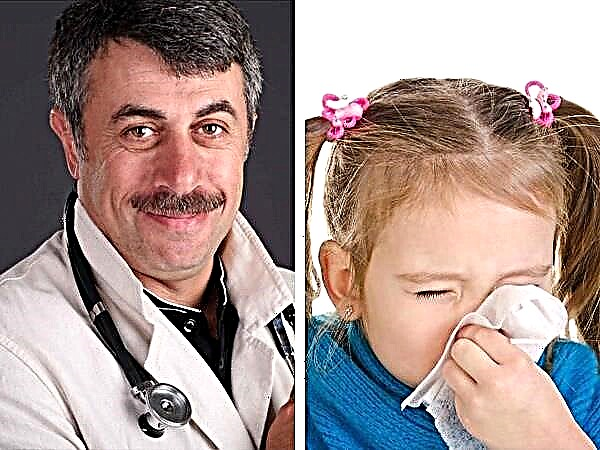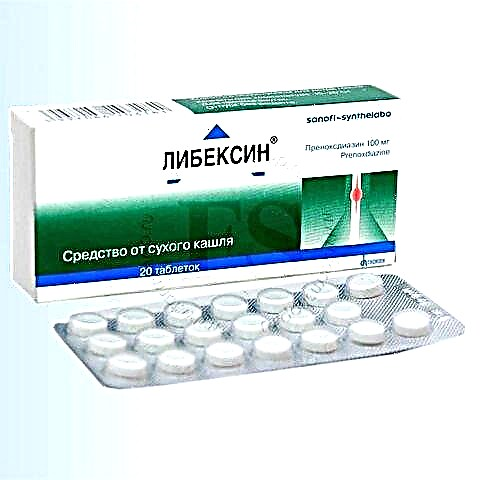
A brain tumor - such a diagnosis sounds scary. The sooner it is discovered, the more chances the child has for a normal healthy life.
That is why it is so important to know what signs are accompanied by this pathology. In this article, we will tell you how to suspect a tumor in the early stages, we will figure out whether neoplasms in the intracranial space are as dangerous as it seems, and whether it is possible to count on a positive outcome of treatment.

What it is?
It's always hard to talk about childhood tumors. Not only journalists and observers do not like to do this, but doctors themselves are too sensitive topic, because by and large the doctor cannot answer the main questions of parents who are faced with the presence of such a pathology in their child - why did this happen and what is the prognosis for future.
There is still a lot of unknown in the occurrence of brain tumors in children (and in adults). Nevertheless, there is information, and it is constantly updated, since up to 30% of all childhood tumors are nothing more than brain tumors.

Brain tumors mean a fairly large group of neoplasms, both malignant (cancerous) and benign. Tumors develop due to the fact that uncontrolled abnormal growth and division of cells begins in a particular organ.
Not so long ago, these cells were a natural component of the brain tissue, membranes, but under the influence of certain factors, they begin to grow at an incredible rate, as a result they turn into a tumor. Which cells started to grow ultimately determines the type of formation.
If the cells of the brain tissue grow, they speak of an ependymoma or astrocytoma. Such tumors are most common - in about 60% of cases. If the cells of the meninges divide abnormally, a meningioma is observed. Abnormal proliferation of pituitary cells leads to the development of a pituitary adenoma.


When the cells that make up the cranial nerves divide inadequately, a neuroma develops. There are also dysembryogenetic tumors that form in a child during embryonic development, but they are very rare.
If the tumor appeared on its own and for the first time, they speak of a primary neoplasm, for example, a primary neurinoma. If it was the result of the penetration of metastases from other diseased organs, then they speak of a secondary tumor.


The peculiarities of childhood tumors are that they may not manifest themselves for a long time, because the child's body has an incredible compensatory potential, it “smooths out” the pathology, levels the symptoms. That is why the tumor found in a child is sometimes quite large.
Symptoms and first signs
What the symptoms will be depends on in which part of the brain the neoplasm has appeared, which parts of the brain are subjected to compression, which cells are destroyed because of this. The earliest symptoms are called focal, these include the following.
- Change in sensitivity and perception... Decreases or increases the child's susceptibility to pain, light, sound, touch. Children over 3 years old may demonstrate a violation of the perception of themselves in space, for example, the baby cannot understand and explain how he holds his hand - up with his palm or down if he closes his eyes.
- Loss of memory... The child begins to forget even those things that he knows perfectly well, he may stop recognizing someone from his family, he may forget letters and numbers if he already knows them. The memory of events, both distant and recent, also suffers.
- Movement disorder... As the tumor grows, the transmission of signals from the brain to the muscles worsens, as a result of which complete paralysis can develop; if a tumor of the brain stem, bone marrow develops, the paralysis is of a local nature.

- Seizures and seizures... At first, as a rule, there are small seizures, short in time, then epilepsy may develop.
- Hearing impairment... The child may lose the ability to hear, or may lose the ability to understand speech. If a tumor affects the speech recognition centers, then all words turn into an incomprehensible noise for a small patient.
- Visual impairment... If the optic nerve is pinched or affected, the child will lose some or all of his vision. It may not be the nerve that is affected, but the part of the brain responsible for the analysis of what he saw, and then the little patient ceases to recognize familiar objects.
- Speech anomalies... With the defeat of the center of speech, the ability to speak is completely or partially lost. Speech may persist but become unintelligible mumble.
- General deterioration... It is associated with damage to the vagus nerve by a growing tumor. It manifests itself in the form of attacks of severe dizziness, loss of balance, inability to get up from a sitting position, as well as instability of blood pressure, attacks of severe weakness.
- Movement coordination disorders... This happens when the cerebellum is damaged. The symptom progresses rather quickly from small inaccuracies in movements to the complete impossibility of making a purposeful movement, for example, taking a certain object from the table.
- Mental disorders... A child with a tumor, as the latter grows, changes in behavior, in reactions. Most often, children become aggressive, irritable and whiny. If the lesions are significant, self-identification may be lost. Many have visual and auditory hallucinations.


Symptoms of the second plan, appearing even when the tumor is quite large, are called cerebral. These include:
- severe headaches;
- persistent or regular vomiting;
- inability to eat normally due to the fact that any substance that gets on the root of the tongue causes an emetic attack;
- dizziness.

In infants and a little older, the symptoms have their own characteristics. Most often, in babies, the tumor manifests itself as changes in behavior: the child for no apparent reason constantly cries, whines, moans, screams, makes tantrums, he often vomits, there are signs of hearing or vision loss, a tendency to seizures and frequent nosebleeds.
Reflexes may also be disturbed - swallowing, sucking.
It is impossible to recognize a pathology by a combination of symptoms without diagnosis, but the appearance of such symptoms, or at least one of them, should become a good reason to postpone all affairs and plans and go with the child to see a doctor.
Why is it important to do this urgently? Because in the case of tumors, it is important to be in time - to diagnose on time, to start treatment on time. According to statistics from the Ministry of Health, over the past three decades, the number of children with brain tumors has grown significantly - almost 3.5 times. In 15% of all tumors, we are talking about cancerous growths.

Causes
Since the reasons for the development of the tumor are not known for certain, no doctor will dare to even suggest why the child has begun uncontrolled division of recently healthy brain cells. But after all, something needs to be said, the doctor cannot answer his parents honestly, "I don't know."
Therefore, the onset of the tumor process is usually explained by the reasons that explain everything that cannot be explained - bad ecology, radioactive pollution, genetically modified food, toxins, at least genetics, if it turns out that one of the child's relatives also suffered from a brain tumor or in general had problems with tumors.

It is believed that various traumatic brain injuries that a child could receive when falling, in a fight, playing sports can provoke (indirectly) the growth of brain cells under the influence of an abnormal immune response.
The risk group for the likelihood of cerebral neoplasms includes children with HIV infection, as well as children who, for some other medical reason, are prescribed drugs that suppress the activity of the immune system (immunosuppressants).

Diagnostics
If you find suspicious signs in a child, such as weakness, lethargy, increased excitability, fatigue, frequent and severe headaches, behavioral changes, systematic vomiting, not associated with other reasons, you should immediately contact a neurologist or pediatrician.
For primary diagnosis, methods such as EEG, EchoEG, CT, MRI are used, neurosonography (ultrasound of the brain) is performed for babies under one and a half years old. If a neoplasm is detected, PET-CT is performed, this technique makes it possible to assess the degree of malignancy. The exact cellular nature can be established using histology.
Treatment
Conservative treatments are solely aimed at relieving certain symptoms, such as persistent vomiting or severe headaches. The cause of these symptoms is not eliminated by medication. Therefore, the most effective is the surgical intervention, during which doctors remove the tumor.
If the tumor is small and growing slowly, stereotactic radiosurgery can be used, in which the tumor is exposed to radiation. But usually a complete recovery does not occur: the tumor only stops developing, and sometimes decreases slightly in size. If the neoplasm grows quite intensively, then this method is not suitable for treatment.


After the operation, and sometimes both before and after it, courses of proton radiation therapy, as well as courses of chemotherapy, are carried out. The treatment is very serious and difficult, long-term. It will require parents to mobilize their strength, both physical and moral.
Much depends on them - the child needs constant support, love and care, as well as a firm parental belief in a positive outcome of treatment.
On this long and difficult path, they will meet different people - attentive and cynical doctors, representatives of different religions who will urge them to pray, as well as healers, false healers, magicians and wizards who will offer gratuitous help in healing a child “without surgery and medicines. "
It is at this moment that the temptation to start feeding a child with aviation kerosene, a mixture of vodka and oil according to Shevchenko's method, and mouse droppings can prevail over common sense. It is necessary to refrain from such "treatment", trusting doctors. Believe me, they want the kids to be healthy no less than you.


Predictions and consequences
The most favorable for prognosis are benign tumors. With their convenient location and availability, neoplasms in children are quickly removed. The downside is that no one will give guarantees that a benign formation will not appear again, and this may require a second operation.
Tumors of the spinal bone marrow, subtentorial, localized in the middle section, are much more difficult to operate. If the tumor is malignant, moreover, difficult to access, the prognosis is poor.

It is very difficult to say something about long-term consequences, because not only the tumor itself can harm the child, but also the methods of its treatment, especially during the age periods when certain brain skills are formed - in newborns, at 6 months, at 11-12 months, in 3 years.
Survival statistics are compiled over a five-year period. It says that 60 to 75% of children survive.

You can learn more about the diagnosis of brain tumors in children from the following video.



